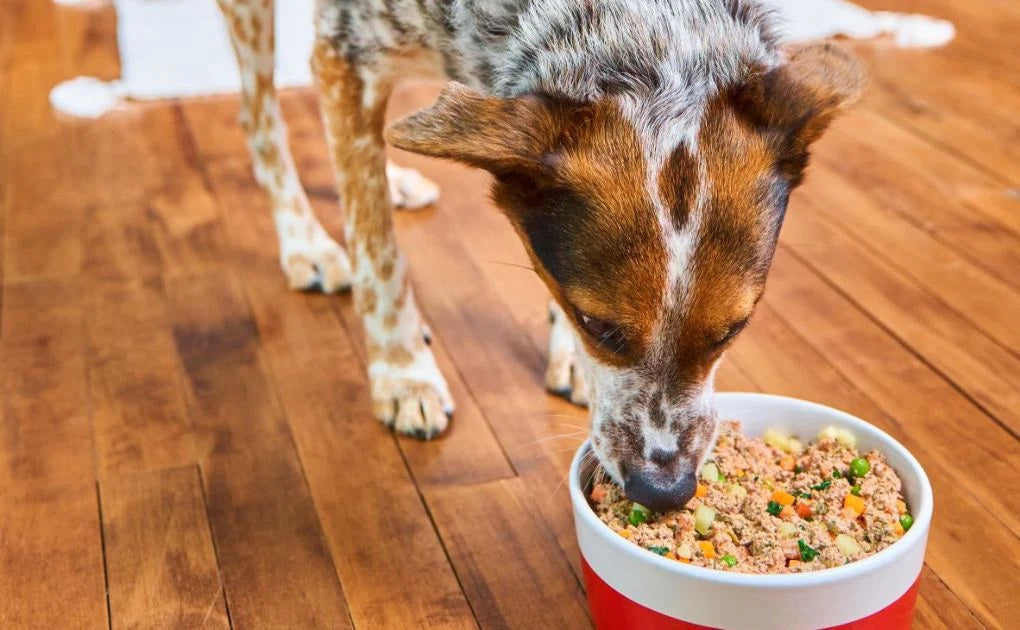Gently Cooked Pet Food: A Healthier, Safer Way to Nourish Your Pet
By: Nolan Vitt
Date: Oct 13, 2025
Why Consider Gently Cooked Food?
In recent years, pet owners have increasingly looked beyond traditional kibble and canned food. One of our favorite approaches is gently cooked food. Unlike raw diets, gently cooked formulas use controlled, low-temperature cooking methods to eliminate pathogens while preserving more nutrients. Gently cooked pet food is still fully cooked. A good thing to look out for when choosing your source of gently cooked food is the protein percentage. A higher percentage of protein is a good indicator of a healthy, energizing meal for your dog or cat as it will contain less carbohydrates and fillers.
Here are some of the top benefits that make gently cooked food appealing:
-
Better digestibility. Gentle cooking helps proteins and vegetables break down more easily, making nutrient absorption more efficient.
-
Nutrient preservation. Because it's cooked at lower temperatures than conventional pet food, more vitamins, minerals, and enzymes remain intact.
-
Safety over raw. While raw diets carry risk of bacterial contamination, gently cooked food reduces those risks by applying sufficient heat to neutralize pathogens.
-
Natural flavor & appeal. Dogs often find gently cooked food more aromatic and tasty, making it a good option for picky eaters.
-
Reduced reliance on synthetic additives. Because more of the original nutrition is preserved, some brands require fewer added vitamins or preservatives.
How Gently Cooked Food Works (vs. Kibble & Raw)
| Feeding Approach | Cooking / Processing | Key Advantages | Things to Watch |
|---|---|---|---|
| Gently Cooked | Low-to-moderate heat, small batches, steam or sous-vide style | Balanced safety + nutrition, good digestibility | Must ensure proper cooking / handling to avoid undercooking |
| Kibble / Dry | High heat, extrusion, often high pressure | Long shelf life, convenience | Can degrade heat-sensitive nutrients; may include fillers & synthetic additives |
| Raw / Biologically Appropriate | No cooking; often frozen or thawed | Maximum retention of natural enzymes & nutrients | Risk of pathogen contamination; requires strict food safety |
Gently cooked offers a middle ground: safer than raw, more nutrient-rich than heavy processing.
Making the Switch: Tips for Transitioning
Switching your dog’s diet should be done gradually to minimize digestive upset. Here’s a sample 7-day transition plan:
-
Days 1–2: Mix 25% gently cooked food with 75% current diet
-
Days 3–4: Move to 50/50
-
Days 5–6: 75% gently cooked, 25% old diet
-
Day 7+: Fully shift to gently cooked
Always monitor stool consistency, appetite, and energy levels. Consult your vet if your dog has special health needs (kidney issues, diabetes, allergies, etc.).
Final Thoughts
Gently cooked pet food offers a compelling balance: higher nutrition, improved digestibility, and lower risk compared to raw diets. For pet owners seeking a more natural feeding approach without giving up safety, it’s absolutely worth exploring.
If you’re curious whether gently cooked food is right for your dog, start with a small sample or mix it in slowly. Monitor how your dog responds—and as always, partner with your vet for personalized guidance.


